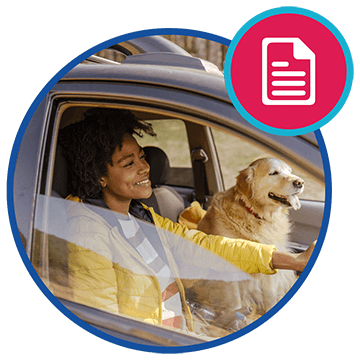You would have to be living under a rock to not know that electric vehicles are the way of the future. During the pandemic, many people’s lives changed, and one of the ways they changed was how people and families travelled. With air travel being extremely challenging, if even allowed (then), people took to long-distance trips to fill the travel void. However, we all know that the rising gas prices don’t make long-haul trips super cost-effective. Whether you intend on going on a road trip or not, it’s time to consider switching to an electric car. Don’t be discouraged about taking a trip in your new EV; it can be done, and we’re here to offer some tips on how to take an EV road trip.
Have The Right Electric Vehicle
Unfortunately, not all EVs are created equal, so before you road-trippers head out on the open road, ensure your electric car has the appropriate range. Just because your EV might not have the miles of range needed to take long road trips doesn’t mean your electric vehicle isn’t great for short-distance or city driving. You just want to ensure your car’s battery has enough range to travel between charging stops.
Our apologies; we assumed you’re already an electric car owner, but maybe you aren’t, and you’re on the fence. If that’s the case, check out EV options that are available to buy today. Or, maybe you want to gauge if an EV is suitable for you and your road trip life. In that case, consider renting one to test it out. There’s also no shortage of EV drivers. After all, in 2020, 3.5% of vehicle ownership was electric vehicles, so you can always chat with them about the pros and cons of owning an EV. We’re confident that Tesla owners will have some pretty incredible things to say; they are the OG of electric vehicles!
If it’s time for you to purchase an EV, consider buying a used one to save some money. In certain provinces, when you purchase a used EV, you are exempt from paying PST. But (big but) before you sign the dotted line, check the battery status in the vehicle. It is natural for the battery to degrade over time, but you want to ensure you aren’t going to have to replace it right away as they are the most expensive single part of the vehicle.
Plan, Plan, Plan
Just like you would plan a road trip in a gas-powered vehicle, you need to plan when heading out in an EV. To eliminate range anxiety, take a little extra precaution when planning EV charging station stops. Some great apps are available, such as A Better Route Planner (ABRP), PlugShare, ChargeHub, OpenCharge, and even Google Maps to help plan your route. Part of the planning process is knowing your vehicle’s driving range and planning a 10% buffer.
As you build out your route, do yourself a favour and plan your stops at public charging stations with DC fast chargers. Remember that you don’t need to get a full charge in a single charge; you just want enough to make it to the next electric car charging station. The one benefit of driving a gas-powered vehicle is you can pull up to a gas station, and within five minutes, you can fill up and be back on the road.
When looking at charging options along your route, do your best to plan those stops at restaurants, grocery stores, and hotels. Doing this can “kill two birds with one stone.” Even better if you can plan to need the most significant charge around your hotel stays. Many hotels will offer free charging and have the EV chargers easily accessible in the parking lot. Take your stay at the hotel as a chance to plug in, get some rest, and hit the road with both you and your battery fully charged.
Since we’re on the topic of chargers, remember to bring your charging cord, extension cord, and any adapters you may need. The last thing you want is to plan your route perfectly and then not have the equipment to make it past your first stop.
Mindful Of Driving
In case you didn’t know, the way you drive directly impacts your battery’s range. The quicker you accelerate, the quicker it drains your battery. Of course, travelling through the mountain ranges of Canada and some of the national parks require that little extra ‘gitty-up’ to get going, but just know that you need to make it to the next charging station. Pop your vehicle into economy mode when you can, which will increase the regenerative braking and energy efficiency.
Understand that weather impacts your battery life. On average, 18.5 percent of the range is lost when driving in temperatures below zero at -2 degrees. Additionally, using the car’s features, such as air conditioning, will drain the battery quicker.
Driving an electric vehicle is definitely the way to go, whether for everyday driving or a long road trip. There lies one issue; getting your hands on an EV. As gas prices continue to rise at astronomical rates, so does the demand for electric cars. We’ve got the solution. Browse FFUN Cars’ EV inventory, enjoy a 360-degree virtual tour, check out the free CARFAX report, and purchase it online, in-store or a combination. We’ll even deliver your new ride. On top of that, we also offer 24-hour test drives and a 30-day money-back guarantee.



